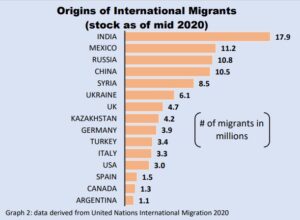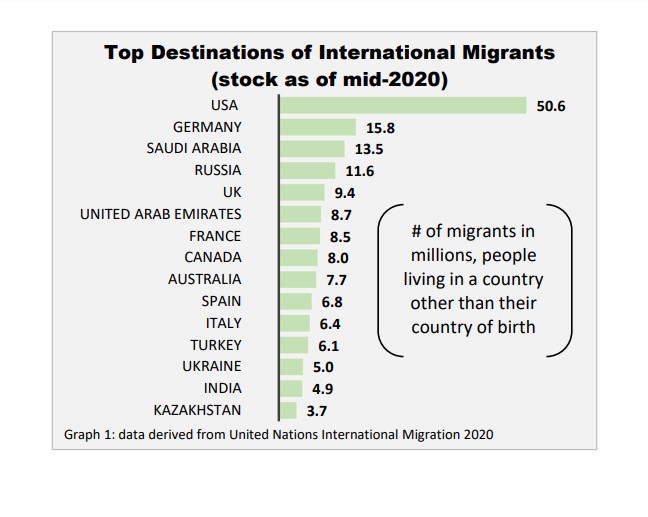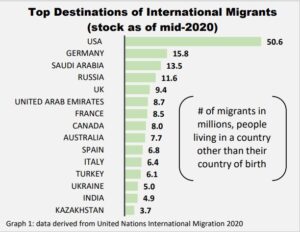Pandemic stirs changes in international migration
Usually, most people leave their native country for better opportunities. Some migrants leave for work, for study, or to join family. In fact, several factors may determine population movements which include poverty, political unrest, violence, natural disasters or conflict. According to the United Nation’s latest estimates on international migration (mid-2020), nearly 281 million (M) migrants live outside the country of their birth.
That figure represents roughly 3.6% of the world’s population and appears to be growing. In 2000, international migrants totaled 173 M, by 2010 the migrant population increased to 221 M.
In previous editions, the Corriere Canadese reported on the migratory phenomenon from Italy. The series focused on the main destinations for Italian migrants. When considering the top destinations of international migrants, Italy ranks among the top 15 host countries.
At last count, the UN’s Department of Economic and Social Affairs estimates that 6.4 M international migrants have settled in Italy, representing about 10.6% of the nation’s population.
Ultimately, the United States remains the main destination for international migrants since 1970. The most recent estimates suggest 50.6 M foreign-born people reside in the North American country. They represent about 15.3% of the American population. (see graph 1 above)
The second most popular country among migrants is Germany, host to 15.8 M international migrants, roughly 18.8% of the country’s population. About 13.5 M foreign-born people reside in Saudi Arabi, followed by Russia at 11.6 M and the UK with 9.4M. Canada ranks eighth globally with 8 M international migrants which represent 21.3% of the Canadian population.
When it comes to which countries have the largest diasporas, India tops the list. Nearly 18 M people from India live outside of their native country of birth. Mexico is the second largest country of origin with a diasporas of 11.2 M people.
Other countries with a large concentration of native-born people living abroad include Russia (at 10.8 M) and China (at 10.5). Of the 281 international migrants around the world, 3.3 M originate from Italy, followed closely by 3 M Americans and 1.3M Canadians. (see graph 2)

International migration has its benefits. Diasporas contribute to the development of their native countries through various means like, the promotion of foreign investment, trade, technology and financial inclusion. However, the pandemic has disrupted the mobility of the global population through the closing of national borders, travel bans and various Covid restrictions.
It may be to early to determine the impacts of Covid-19 on the migration population. However, preliminary data suggests only two million migrants arrived in other countries by mid-2020. That represents a drop of 27% from the previous year.
This decrease may have a significant impact on the livelihoods of millions of migrants and their families. The UN comments that such a decline may stall the progress in achieving sustainable developments goals further emphasizing international cooperation and national strategies to mitigate the effects of such loss.




